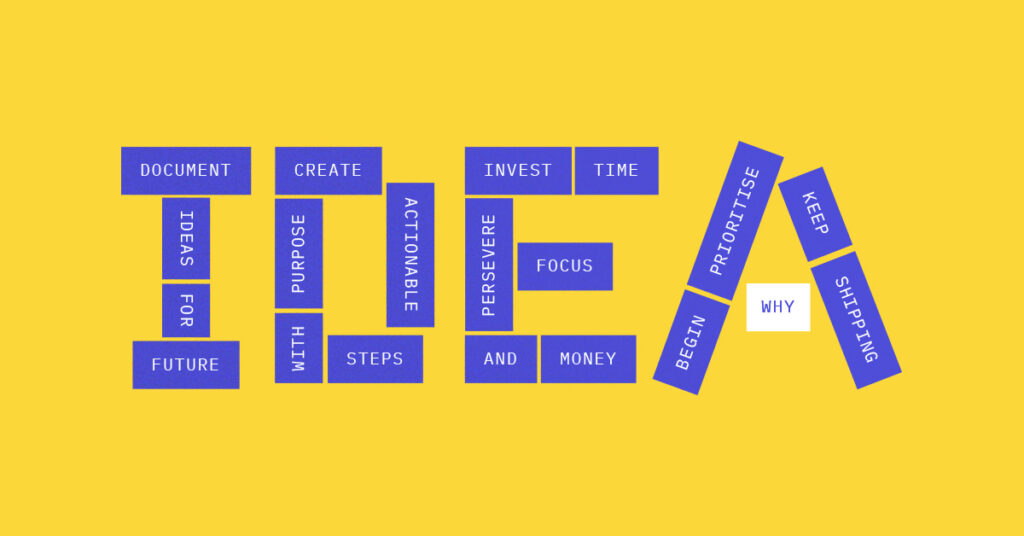10 Proven Steps to Execute Ideas and Deliver Results

Are you a great problem solver? Can you execute ideas?
Do peers and clients flock to you for your creative genius and the innovative ideas you can generate?
Even if you’re not a designer or copywriter, creativity has become the number one soft skill companies look for – regardless of the industry.
Let’s get this straight – I’m not on board with calling creativity a soft skill. But it’s a start in the right direction. I absolutely believe that creative thinking is the most crucial component to someone’s skill set.
As a creative professional, your aptitude to generate innovative ideas and solve complex problems is basically a must (hint: you can also supercharge your idea generation ability with external stimuli like this).
But what happens to ideas you generated that don’t get implemented?
Spoiler alert: they end up at the idea farm (read idea cemetery)!
Way too many innovative ideas never become a reality
It doesn’t just have to be the next best-seller or a groundbreaking product design.
You likely come up with creative solutions and new ideas every other day – sadly most of these never get implemented.
Even if you’re on the right track, you’ll get run over if you just sit there.
– Will Rogers
That’s why the ability to execute ideas is worth more than generating them.
I love the 80/20 rule so much, I’m going to reference it here again. And I will dare to say that implementing an idea is worth 80 percent versus 20 percent for idea generation. Idea without execution is worthless.
Good news is, as a business leader or creative professional, there are practices you can adopt to make ideas happen.
1. Implement the practice of documenting your ideas
I usually carry around a Moleskine Pocket Notebook with me in my work/travel bag. It’s perfect to document ideas or thoughts.
Sometimes they can turn into sketches, descriptions or mind maps of the idea.
The key is to keep track of these breadcrumbs. These can be vague ideas for new product concepts. Or it can be an idea for your current project that you can’t implement due to budget constraints.
In the future it might just become perfect for something else.
2. Break down each feasible idea into smaller steps
Even the most productive entrepreneurs and creatives feel the overwhelm of a large idea or concept. This can send a lot of us into procrastination mode, avoiding action.
The trick is to break it up into manageable smaller tasks that you can action today.
Momentum is so underrated. But it’s possibly the most powerful force that helps successful innovators to continue launching their ideas ‘into the wild’.
You just need to accomplish one small initial task to get it going. You’ve heard the saying – the journey of a thousand miles begins with…
3. Be deliberate with your action step titles
The previous tip sounds basic to most – and it is.
Surprisingly though, even when embracing that method, some still fail to execute their ideas. It’s all about the specificity of the task.
People tend to name their steps with something generic like ‘website research’ or ‘inspiration time for…X’. Or on the opposite side of the scale – the task description is too long. To the point where a task seems to have no beginning or end.
To execute ideas and drive them forward, start your action step with a verb and keep it relatively short.
Design wireframe for home page.
Create a list of competitors for service X.
Mockup a business card design for Joe.
Send an email to Bill regarding Z.
4. Practice patience, focus and perseverance
I used to get frustrated watching colleagues, friends and loved ones get excited about an idea only to get distracted by something new and shiny a few weeks later.
The truth is that some ideas can take time and significant effort to develop. If you continue jumping from one idea to the next you’ll never allow any of those ideas to fully grow.
Perseverance may just be one of the key common denominators of successful people.
I was lucky to have developed this trait early on. It probably has something to do with my Russian upbringing – perseverance was pretty much the required default mode.
If a kid growing up in post Soviet Russia can practice perseverance – so can you. You’ve got to stick with your idea even when times are tough and you want to give up.
5. Schedule a monthly or quarterly idea review session
Those ideas in your Moleskine might not always turn into something.
But the point is that sometimes they may. One day when reviewing your list of ideas you might just find one that’s ready to be actioned. Then it’s a matter of breaking it down into action steps.
Setup a time first Sunday of every other month, or whatever works best for you. And create a calendar reminder to go through your list. Use this time to either cull an idea, keep it, or see if it’s time for it to take flight with a set of action steps.
6. Invest money into the idea
Deciding that you have a great idea isn’t enough. You need to commit. One of the most effective ways to commit to anything is to invest your hard earned cash. A decision like that tends to spur you into action and solidify your intentions.
Investing a solid chunk of time into something can also work the same way. Especially if you’re a Type A personality. My wife still can’t understand why I insist on finishing a movie or a book, even if I’m not fully into it!
The point is that you’ve committed to see your plan till the end!
7. Begin executing the idea now
Procrastination is the biggest idea killer of all.
We’ve all been there. You get excited about something new. Sit on it for a while, imagining all the magical ways this idea can come to life. You think to yourself ‘I’ll Google some info on that on the weekend’.
The weekend passes and you’d forgotten all about it. Your enthusiasm wanes.
Few weeks later, during a morning shower you vaguely remember you wanted to Google something. But alas it is gone.
Your initial enthusiasm is what’s required to accomplish the first action step. Once the momentum is there, the idea takes the life of its own, and you’re off!
8. Prioritise your action steps
Once you have your action steps assigned you have to be brutal in carving out time for actioning them. An awesome list of tasks that is not executed is worthless.
Treat these as any other significant appointments in your daily life. Block out time in the calendar. Engage the ‘do not disturb mode’. Let people know that you’ll be unavailable.
Basically do what you need to, in order to keep progressing your idea forward.
You may need to have a weekly review of your other jobs, tasks and priorities. So that you can shuffle things around to fit your new action steps into the schedule.
9. Just keep shipping
Seth Godin is well-known as a prolific blogger and marketing leader. He is perhaps even more well-known for being incredibly productive, amassing an impressive body of work. When Seth was asked about his productivity prowess he explained that many of the products and ideas he’d launched had failed.
But that is precisely what he’d felt contributed to his success. The fact is, that despite multiple failures, he just focuses to keep shipping.
Seth uses shipping as a term signifying releasing an idea, a product, an artwork or anything else new ‘into the wild’.
You see, fear or failure stops most entrepreneurs and creatives in their tracks. In the words of Seth, that’s the ‘lizard brain’ sabotaging you, holding you back. It requires a certain kind of skill to continue on. To ignore the lizard brain’s plea and strive forward despite the setbacks.
The key is to get comfortable with the risk of failure.
10. Understand why this idea is important to you
I hardly kept to any of these rules when I first became a designer.
Even after decades of generating and executing ideas I still need constant reminders of the process. Even writing this blog took at least three attempts. For every three sentences, I crossed out two and started again.
I’d reread and rearranged the flow of the article three or four times.
But every time I felt enthusiasm dwindle, I reminded myself of the most important step of all. The reason why I’m creating content and sharing it with anyone who would listen.
Because I am really passionate about helping business owners and creatives build positive impact through their innovations and creative thinking.
So go and seek out the reason why you feel your idea is important. That reason will be your passion that will help to continue driving the idea forward towards completion.
Sharing is caring
If you know someone who might benefit from this article please share it. If you ever need someone to talk to about idea generation or execution please contact me.
